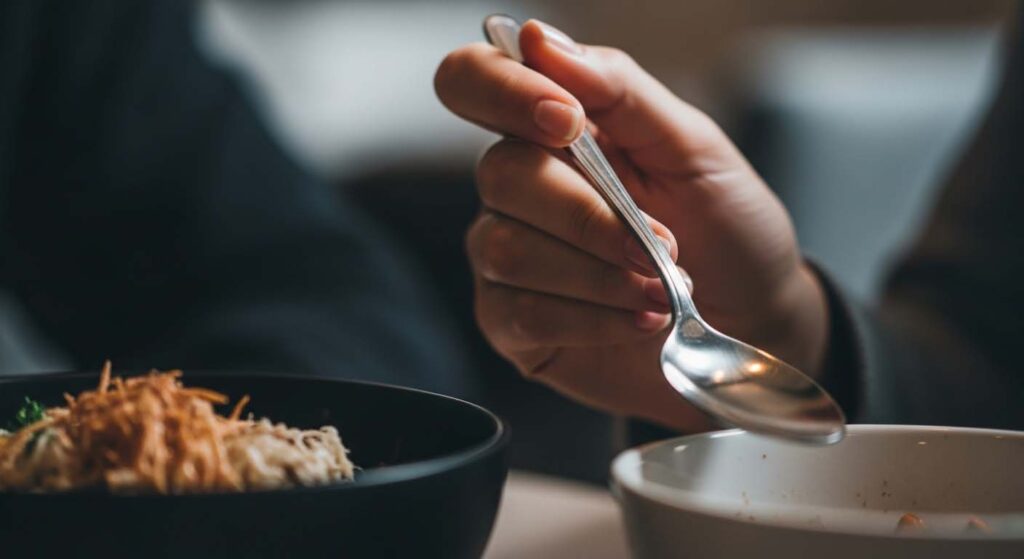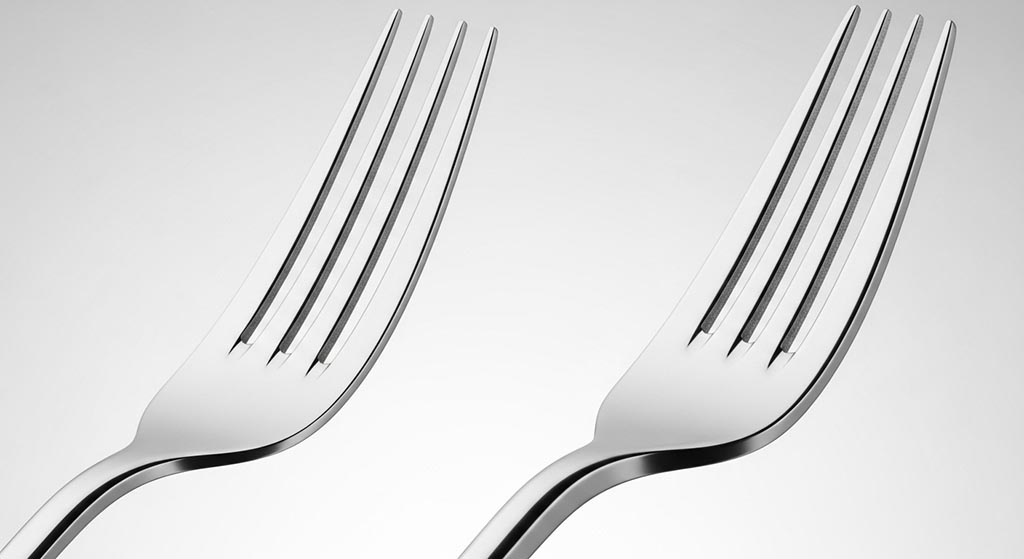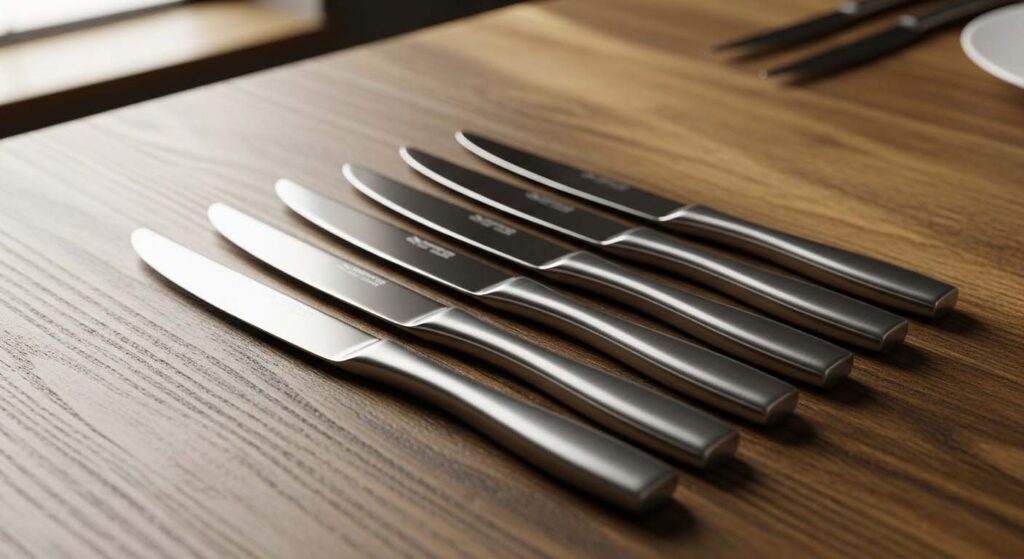What really determines the weight and balance of cutlery?
You pick up a fork in a restaurant. It feels flimsy, cheap, and disposable. You want to source quality cutlery, but just looking for a "heavy" product doesn't tell the whole story.
The weight and balance you feel are determined by three key factors: the thickness of the steel (gauge), the manufacturing method (forged or stamped), and the handle construction (solid or hollow).

My client Jacky once rejected a set of samples we made. I was confused because they met the exact weight specification we had agreed upon. He called me and said, "Linc, the weight is correct, but the balance is all wrong. The fork wants to tip out of my hand." That taught me a crucial lesson. The feeling of quality isn't just about mass. It's about physics. It's about how that mass is distributed from the tip of the tines to the end of the handle. This is the difference between a product that feels okay and one that feels truly premium.
How does material thickness change how cutlery feels?
You see specifications like "3.5mm," but the numbers are abstract. You are not sure if paying more for a thicker gauge is a good investment or just an unnecessary expense for your brand.
Thickness, or gauge, is the most direct factor affecting weight. Thicker steel not only feels more substantial but also resists bending under pressure, which immediately communicates durability and luxury to the end user.

In my factory, we live by millimeters. Even a half-millimeter difference completely changes the character of a piece of cutlery. When a customer picks up a fork, their hand instantly judges its quality based on its resistance to bending and its density. A thin fork feels cheap because it is flimsy. A thick, rigid fork feels expensive. This is a very simple and powerful psychological connection. For his brand, Jacky specifies a minimum of 4.0mm for forks and spoons. He knows this simple specification elevates his product far above the mass-market standard. The extra material cost is minimal compared to the perceived value it creates. It’s one of the easiest ways to build a premium feel directly into your product.
| Gauge (Thickness) | Typical Market Segment | Customer Perception |
|---|---|---|
| 2.0 mm - 2.5 mm | Cafeterias, budget airlines, disposable sets | Flimsy, cheap, bends easily under pressure. |
| 3.0 mm - 3.5 mm | Mid-range retail, casual dining restaurants | A good standard, feels substantial and reliable. |
| 4.0 mm+ | Premium brands, fine dining, luxury retail | Luxurious, durable, impressive weight and rigidity. |
Is forged cutlery always better than stamped cutlery?
You hear the term "forged" and immediately think of a blacksmith and superior quality. You assume it's always the best choice, but you see many beautiful designs made from stamped steel.
Not always. Forged cutlery1 is heavier and offers superior balance for classic, thick-handled designs. Stamped cutlery is more versatile, allowing for sleek, modern shapes while being more cost-effective to produce.

Forging and stamping are two completely different ways to make a fork. Forging involves heating a single bar of steel and hammering it into shape. This creates a very thick piece, especially at the "bolster," which is the area where the handle meets the head. This heavy bolster acts as a natural balance point. Stamping is different. We use a powerful press to cut the shape out of a flat sheet of stainless steel, almost like a cookie cutter. Then, we use other machines to form the bowl of the spoon or the tines of the fork. The choice between them depends entirely on the design you want. For a classic, ornate pattern, forging provides the weight and balance that customers expect. But for a slim, minimalist Scandinavian design, forging would make it look clunky and heavy. Stamping allows us to create that light, elegant shape. One is not better; they are simply different tools for different design goals.
Forged vs. Stamped: Key Differences
| Feature | Forged Cutlery | Stamped Cutlery |
|---|---|---|
| Process | Heated and hammered from a steel bar | Cut and shaped from a steel sheet |
| Weight | Generally heavier | Generally lighter |
| Balance | Excellent, weighted at the bolster | Depends on the overall shape |
| Best For | Classic, traditional, and robust designs | Modern, minimalist, and intricate designs |
| Cost | Higher manufacturing cost | Lower manufacturing cost |
You pick up a large, impressive-looking dinner knife. You expect it to be very heavy, but it feels surprisingly light and perfectly balanced. You discover it has a "hollow handle" and worry this means it's cheap.
A hollow handle is a feature of high-end manufacturing, not a cost-cutting measure. It allows for a large, comfortable handle that isn't excessively heavy, creating perfect balance by preventing the handle from outweighing the blade.

This is one of the most misunderstood features in cutlery. Creating a good hollow handle is actually more difficult and expensive than making a solid one. To make one, we stamp two halves of the handle separately. Then, the blade is inserted, and these two halves are expertly welded together around it. The final step is to polish the seam so perfectly that it becomes completely invisible. The reason we do this is all about balance. A knife blade is long and relatively light. If we attached it to a big, solid piece of steel for a handle, the handle would be extremely heavy, and the knife would constantly feel like it was tipping backward out of your hand. The hollow handle provides the large, ergonomic grip that feels good to hold, but because it's hollow, it doesn't have the excess weight. This shifts the balance point forward, toward the blade, creating a tool that feels nimble and perfectly controlled. It's a sign of a very thoughtful design.
Conclusion
The perfect feel of quality cutlery is no accident. It is a deliberate balance of material thickness, the right manufacturing process for the design, and clever engineering to create a perfect balance.
-
Explore this link to understand why forged cutlery is preferred for its balance and durability. ↩
